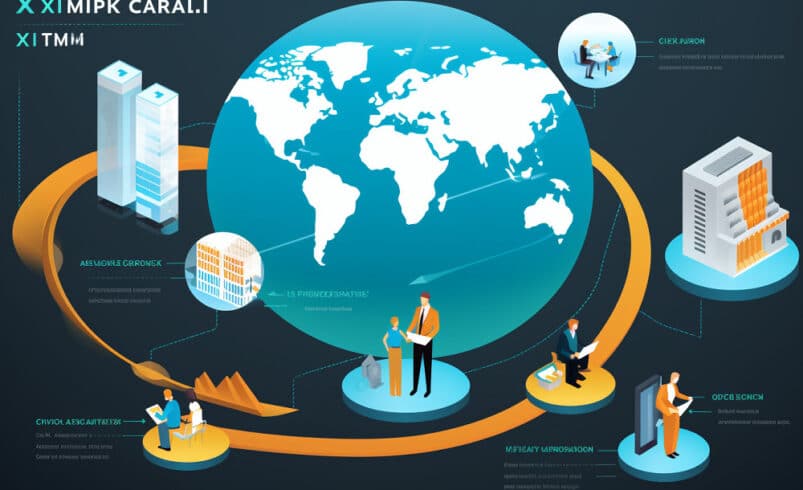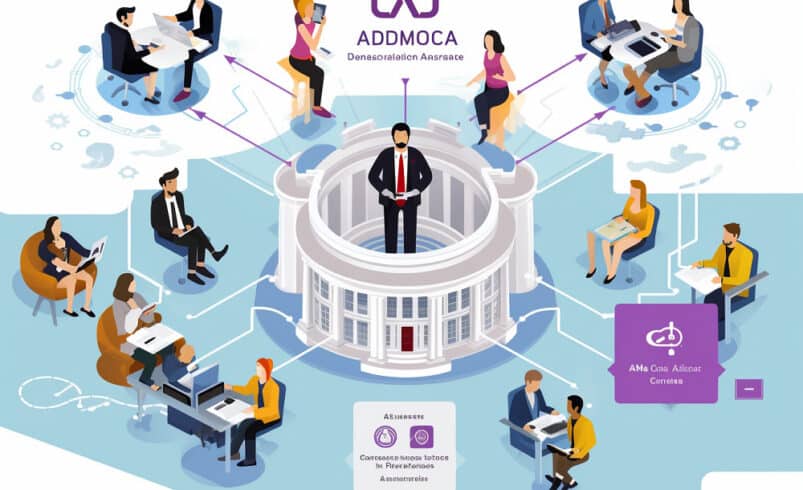Monolithic Vs. Modular Blockchains: All You Need To Know

Table of Contents
The blockchain industry includes many protocols that fall into two main groups: monolithic blockchains and modular blockchains. Each type has strengths, weaknesses, and advantages, highlighting blockchain technology’s flexibility. This guide explores the differences between monolithic and modular blockchains.
Overview Of Monolithic Blockchains
Monolithic blockchains are regarded as the first generation of blockchain systems, enabling today’s groundbreaking technologies to exist. The Bitcoin network is an excellent example of a single blockchain. In these systems, essential functions like executing transactions, reaching agreements, and making data available are grouped in a single layer.
How Monolithic Blockchain Works
In monolithic systems, ease of use is paramount. All transaction data are stored directly on the blockchain, which makes the system open and accessible for all network nodes to view. The first step in executing transactions is to send them to the network.
Then, nodes check their legitimacy before miners add these transactions to blocks by solving cryptographic problems. Consensus in monolithic blockchains relies on proof-of-work (PoW), a competitive process where miners solve challenging mathematical puzzles to secure the right to add a new block.
The settlement finalizes transactions by recording them on the immutable blockchain, ensuring their irreversibility. Although centralized blockchains are easy to use, secure, and consistent, they are not very flexible and can be hard to upgrade. Due to their rigid design, monolithic systems can’t easily change to meet new needs.
Benefits And Drawbacks Of Monolithic Blockchains
Monolithic blockchains boast advantages in simplicity, consistency, and security. Their straightforward architecture reduces development complexity and vulnerabilities, making them resistant to changes that could compromise security.
Consistency across nodes in a monolithic blockchain ensures stability in the network, minimizing the risk of a single point of failure. However, drawbacks exist. Inflexibility poses a significant challenge, leading to bottlenecks and delays during periods of high demand.
As witnessed in the Ethereum Classic 51% attacks, consensus vulnerabilities expose potential risks if the single consensus system gets compromised. Furthermore, upgrading monolithic blockchains is a cumbersome task due to the interconnected nature of their components.
An Overview Of Modular Blockchains
In response to the limitations of monolithic blockchains, a new type called modular blockchains has emerged. Modular blockchains differ from monolithic blockchains because they separate core functions and spread them across different layers.
This modular design makes these blockchain types more efficient, flexible, and interoperable with more technologies and features. The transition of Ethereum from a monolithic to a modular blockchain, known as the Merge, serves as an exemplary case.
Modular blockchains contain essential layers, notably data availability, consensus, transaction execution, and settlement. The microservices architecture allows modifications within individual layers without disrupting the overall network equilibrium.
Operational Dynamics Of Modular Blockchains
In modular blockchains, transaction execution cuts across smaller, parallel blockchains called shard chains, overseen by the Beacon Chain. This distribution enhances scalability and processing efficiency compared to traditional monolithic structures.
The consensus mechanism in modular blockchains often involves proof-of-stake (PoS) orchestrated by the Beacon Chain. Validators propose and validate blocks by staking cryptocurrency as collateral.
The settlement, a crucial aspect of the process, is incorporated into shard chains. Shard chains make sure that data is always available. They also keep transaction loads from getting stuck in one chain, which enables the network to handle more transactions efficiently.
This settlement layer finalizes transactions, bridges transactions across different execution layers, and validates proofs from shard chains.
Advantages And Challenges Of Modular Blockchains
Modular blockchains are gaining traction among developers due to various advantages. One such advantage is scalability; separating tasks across layers improves efficiency and enables simultaneous transaction processing, addressing traditional blockchains’ scalability challenges.
Also, the shared security infrastructure in modular blockchains makes them safer, so each project doesn’t have to set up its security system. Despite these advantages, modular blockchains have their challenges.
Security concerns arise, especially with vulnerabilities in bridges, which can become attractive targets for hackers. The complexity of building and maintaining modular blockchains demands more time, financial resources, and expertise, slowing down development.
Can Both Blockchain Types Coexist In The Future?
Developers believe that the coexistence of monolithic and modular architectures seems inevitable. While monolithic chains remain dominant, the increasing demand for scalable and adaptable solutions is propelling modular alternatives into prominent roles.
In addition, security issues can erode user and investor confidence, emphasizing the need for robust security fortifications. Hence, striking a balance between scalability, security, and adaptability will be pivotal in unlocking the full potential of blockchain technology moving forward.
Conclusion
Blockchain development is changing because each project has its pros and cons. Moving toward a balance between scalability and flexibility will be vital in unlocking blockchain’s transformative potential in the future.
Time Crypto Market offers content visibility for dozens of crypto enterprises, and you can be a part of our network! Reach out to us on our telegram chat for inquiries. The nature of cryptocurrencies is highly unpredictable; always perform your due diligence before any investment. Several articles on our site come from guest contributors or are commissioned pieces, not originating from Time Crypto Market's in-house writers. The perspectives shared in these articles might not necessarily align with those of Time Crypto Market. We do not assume responsibility for the veracity, caliber, promotions, offerings, or any other elements presented on our platform. Consult our comprehensive terms of service and disclaimer for more details.








